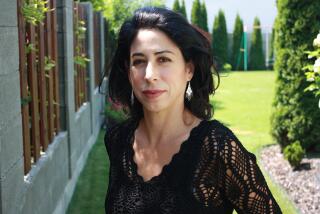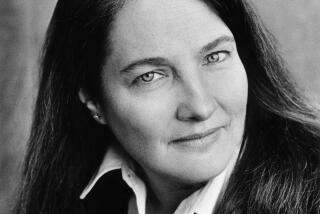In ‘Better Homes,’ it’s life among Park Avenue’s swells
- Share via
The rich are different, declared F. Scott Fitzgerald, who was nothing if not infatuated with the glamour of wealth. Not so Ernest Hemingway, who tartly agreed: They have more money. The characters who inhabit the fictitious Park Avenue co-op in Valerie Ann Leff’s “Better Homes and Husbands” are definitely rich. But coming to know this colorful assortment of snobs, social climbers, jet-setters, establishment pillars, old-fashioned conservatives and well-meaning liberals, one is less struck by the ways in which they’re different from the rest of us than by the ways in which they’re different from one another.
The upper-upper-crust is represented by the Coddingtons, Harold and Beverly. We first meet Beverly in 1976, during the doormen’s strike, when she and co-tenant Peggy Payne pitch in to work at the front desk: “ ‘After all,’ says Beverly ... looking straight into Peggy’s face with her blue eyes, ‘I feel it’s my duty.’ ” Peggy is anxious to impress Beverly but resents the way Beverly makes her feel somehow inferior: “She dislikes this woman, truly she does. Still, she hangs around like a lady-in-waiting, and deep down, Peggy admits to herself, she would give anything to be more like Beverly.”
The Paynes’ rebellious 17-year-old daughter, Sandra, hates her parents and everything they stand for. She’s been carrying on with the family chauffeur, an attractive Jamaican, and has become pregnant by him. Sandra is ostentatiously friendly toward Vinnie, the elevator boy from Brooklyn, offering him joints and unsolicited advice: “She has this strange smile like she’s being sarcastic, and Vinnie never knows how to take what she says.” Vinnie also can’t figure out why these rich kids hate their parents: “He’s done plenty of stuff his mother wouldn’t approve of. But he doesn’t hate her ... he loves his parents.... They work hard,” he thinks. “I work hard.... It’s like we’re all part of a plan.... These [Park Avenue] people are on top of the world. But they haven’t got a plan.”
Mega-rich Dick Sapphire, a kindly, guilt-ridden Jewish man, also has trouble with his daughter, whose mother commits suicide. Years later, Dick lands in an uncomfortable spot when another Jewish tenant asks his help in combating anti-Semitism on the co-op board. The two men find an unlikely ally in the vivacious Angelita Somosa, ingenuous, liberal-hearted granddaughter of the Nicaraguan dictator. (It does seem a questionable authorial decision to have made this delightful character, who is a major player in the novel, the relative of a real-life person.) We see Angelita largely through the eyes of her unabashedly scheming, luxury-loving, cynical yet devoted friend, Lucia Sanchez from Colombia, who, unlike most of the other characters, seldom feels guilty about anything.
All this, and more, goes on in the 30 years covered in these pages: Vinnie loses his job and finds a new career; Dick marries a second, mentally healthier woman who lands a lucrative slot in broadcasting; Sandra’s half-Jamaican son grows into a sharp-eyed teenager. We finally meet the mysterious French baroness in the penthouse, and we’re vouchsafed a touching glimpse of the tender side of the formidable Beverly Coddington. Leff expertly captures the distinctive voices, personalities, values and mind-sets of her characters in 12 chapters, told from a variety of perspectives, that take us from 1970 to 2000.
Although designated a novel, this engaging book is actually a collection of linked stories, an increasingly popular fictional form ever since Harriet Doerr’s prize-winning “Stones for Ibarra.” And it is a form especially well suited to Leff’s enterprise. “Better Homes and Husbands” could also have been titled “980 Park Avenue” (though that would have been less catchy), because it is the biography of an apartment building -- or rather of the sometimes interconnected lives of the people who live in it. As Leff declares in her brief, somewhat sententious introductory chapter: “No one knows the whole history, and the truth is understood in pieces by one resident or another, by a daughter, a friend of the family, by a doorman. The truth is told in stories, in voices tinged with opinion, envy, regret....”
The surprising contrasts among these viewpoints and versions of the truth are what generate the delicious ironies that enrich this sharply perceptive, highly entertaining, shrewdly compassionate book.
Merle Rubin is a contributing writer to Book Review.
More to Read
Sign up for our Book Club newsletter
Get the latest news, events and more from the Los Angeles Times Book Club, and help us get L.A. reading and talking.
You may occasionally receive promotional content from the Los Angeles Times.










